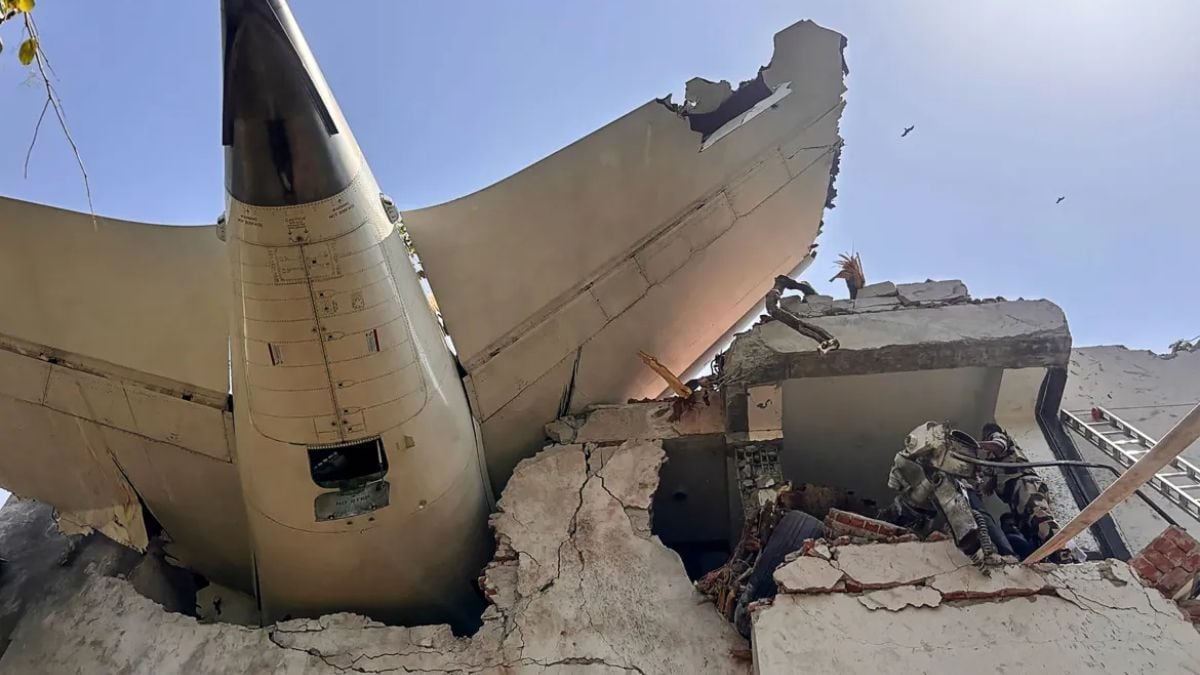

The crash of Air India flight AI-171 shortly after takeoff from Ahmedabad has claimed the lives of 241 people and triggered a flurry of speculation regarding the cause. While official investigations are underway, a theory proposed by aviation expert Captain Steve is gaining traction online, focusing on the possibility of accidental flap retraction.
Captain Steve, a former Boeing 777 pilot and aviation YouTuber, has posted a detailed analysis of the crash, suggesting a critical error may have occurred immediately after takeoff. His theory centers on the crucial moment when the aircraft achieves a positive rate of climb, and the command is given to retract the landing gear. He posits that the co-pilot might have mistakenly retracted the flaps instead of the gear.
Flaps are essential components of an aircraft's wings, deployed during takeoff and landing to increase lift at lower speeds. Retracting them prematurely, especially at low altitude and speed, can drastically reduce lift and increase the risk of a stall. According to Captain Steve, if the flaps were retracted instead of the landing gear, the aircraft would lose significant lift, the gear would remain down, creating drag, and the plane would become heavy, slow, and unable to climb effectively.
This theory aligns with initial observations from the crash site and video footage. Aviation experts have noted that the landing gear of the Boeing 787 Dreamliner remained extended well past the point where it should have been retracted. Moreover, some analyses suggest that the wing flaps were either not deployed to the required extent or were prematurely retracted. This combination of extended landing gear and retracted flaps would create a highly unstable aerodynamic situation, demanding significantly more power to maintain lift and climb.
Other experts have echoed similar concerns. Former F-16 pilot and podcaster Ryan Bodenheimer also believes that the co-pilot may have, by mistake, retracted the flaps instead of the gear. He noted that the wings appeared "skinny" in the footage, indicating that the flaps had been retracted.
The absence of smoke, fire, or obvious engine malfunctions in the available footage further supports the theory that the crash was not caused by engine failure or bird strikes, although these possibilities are still being investigated. While dual engine failure is often speculated in such incidents, Captain Steve dismisses it as unlikely, citing the lack of visible evidence such as smoke or debris.
However, it's important to note that other potential causes are also under consideration. Some experts suggest a mechanical or hydraulic failure could have prevented the landing gear from retracting. Another theory involves the possibility of incorrect weight data being entered into the flight control computer, leading to miscalculation of the power needed for takeoff. Bird strikes and fuel contamination are also being examined as potential contributing factors.
The Directorate General of Civil Aviation (DGCA) has confirmed that a MAYDAY call was issued by the pilots seconds after takeoff, suggesting an emergency situation. The Aircraft Accident Investigation Bureau (AAIB) is currently leading the investigation, with assistance from the US National Transportation Safety Board (NTSB) and the UK Air Accidents Investigation Branch (AAIB). Investigators are expected to analyze the cockpit voice recorder and flight data recorder, commonly known as "black boxes," to gain a clearer understanding of the events leading up to the crash. The analysis of the black box data is expected to provide crucial information within a week.
While Captain Steve's theory about accidental flap retraction is compelling and supported by some initial evidence, it remains a hypothesis until the official investigation concludes. The investigators will explore all possible factors, including mechanical failures, human error, and environmental conditions, to determine the definitive cause of this tragic Air India crash.